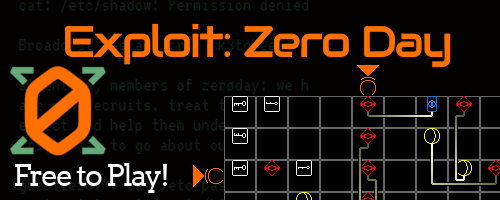Hello! Gregory here. Almost a year ago we released our dark, funny, satirical game Ossuary. It's a story about descending into a static underworld, talking to the people there, and corrupting them with sins that are really virtues.
A year on, it's a good time to look back and talk about how the game was made and received. In short: those who played it seem to have really liked it and understood where it was coming from, but it hasn't had the exposure, popularity, or sales that we wanted from it.
Bone Formation
The idea for Ossuary came about in February 2011. I had made a game called "Narthex" as a testbed for a conversation system that I later used in "The Day" and Ossuary. "Narthex" wasn't a particularly fun game, but I liked the way it looked and its weird hopeful-nihilist perspective.
That version of Ossuary was ready for its initial testing but not finished in June 2011. It went to Flash portals for sponsorship in early November 2011. There was limited interest, and the biggest sponsorship offer I got was for about $2000. That would have been a one-time lump sum with little ongoing revenue. At the same time, Future Proof Games was starting up and Melissa and I decided that the game was worth more than that. I was burnt out on Flash sponsorship and we finally decided to polish the game into a retail downloadable work.
With various personal and financial issues taking up most of 2012, polish was slow going. By the end, however, the game had a lot more to it; the obols, the demons, the labyrinth/torch master puzzle, and a lot of the options and extras were all added in this post-sponsorship period. Finally, in November 2013, we finished.
Emergence From the Grave
We released Ossuary on November 27th, 2013. It was days before Black Friday, a major shopping day in the United States. In retrospect that wasn't the best timing, as one of our testers pointed out. Additionally, we didn't reach out to the gaming press in advance. We'd done some previews and trailers to people who followed the company and each of us individually, but the first time the press in general heard of our game was at the time of release.
As a result, we got less attention than we wanted. We got several great reviews from smaller or specialty sites, but we didn't get much attention from large mainstream sites. When we did, it was limited in scope. For example: Rock, Paper Shotgun did a baffled release news post but never followed up with a post discussing an actual play experience.
On launch the game was available via the Humble Widget. Our sales tapered off pretty quickly, so over the next few months we did a few things to try and help them. We released on Desura, Indie Game Stand, the Humble Store, and some other sites, put ourselves on Steam Greenlight, and released a demo.
The demo was probably the most worthwhile of those attempts. Called "The Hodge-Podge Transformer," it had wholly-original story and puzzles and served as a prequel to the main game. Quite a few players got a chance to try the game and it led to a few more reviews and mentions and a small rally in sales.
The Wages of Sin
In total we've grossed about $1,500 in sales of Ossuary. Most of that is from Humble, with a little more than $1,200 coming from the widget. Desura and the other stores haven't earned much, but they're promoted as secondary stores and weren't present at launch. We still get occasional sales at a trickling rate that wasn't affected when we doubled the price. Our lifetime total for the game, barring any serendipitous surges in sales, will be around the $2000 figure that I was offered for sponsorship of the unpolished version.
Steam Greenlight has proven stagnant. We're currently "32% of the way to the top 100" with around 28% of visitors giving "Yes" votes. We get one or two visitors to our Greenlight page a day and our progress goes up agonizingly slowly, but at this rate it seems likely that Greenlight will get replaced with a different system before it grants us access to Steam.
Lessons
What lessons have we learned? The biggest one is that we marketed the game all wrong. We didn't build up interest in the game before release, giving journalists a chance to preview and review it in advance. Indeed, it was only after some of the reviews came out that we actually understood how to describe what was appealing about the game.
Our initial approach was to play up the creepy unsettling aspects of the game, but our favorable reviews focused more on the satire and humor in the game. If we had highlighted that in advance, maybe we would have gotten more people interested in our announcements and emails.
Likewise, having a demo available at launch would have made it far easier for people to get an idea for the feel of the game and whether they wanted to buy it.
Finally, we underpriced the game. The $5 price that Ossuary had for most of its lifetime was too low, giving a deflated view of the game's content and robbing us of some of the money we could have made from the sales we did get. I'm guessing that most people who bought the game would have bought it at $10 from the start.
Sharing all this information stirs up some complicated emotions. We're proud of what we produced and disappointed that it didn't get the recognition and success it deserved. Most of all, especially after attending GDC Next, we're determined to do better next time.
Any questions about what we've shared or details you'd like to hear? Let us know in the comments.




 View on YouTube
View on YouTube

